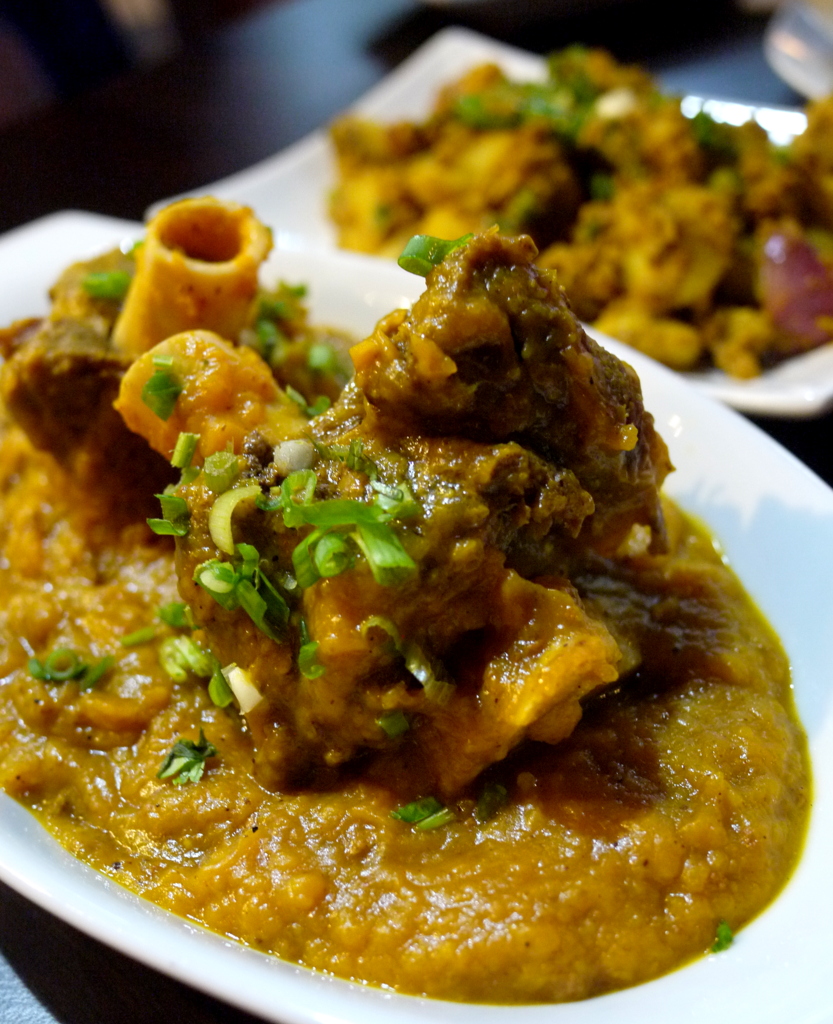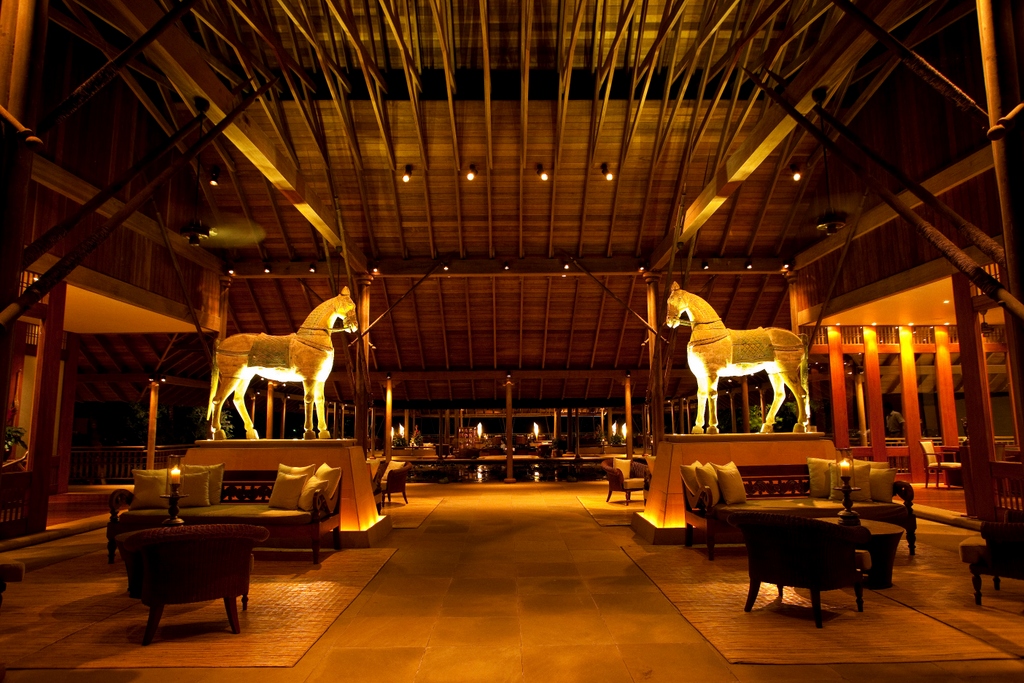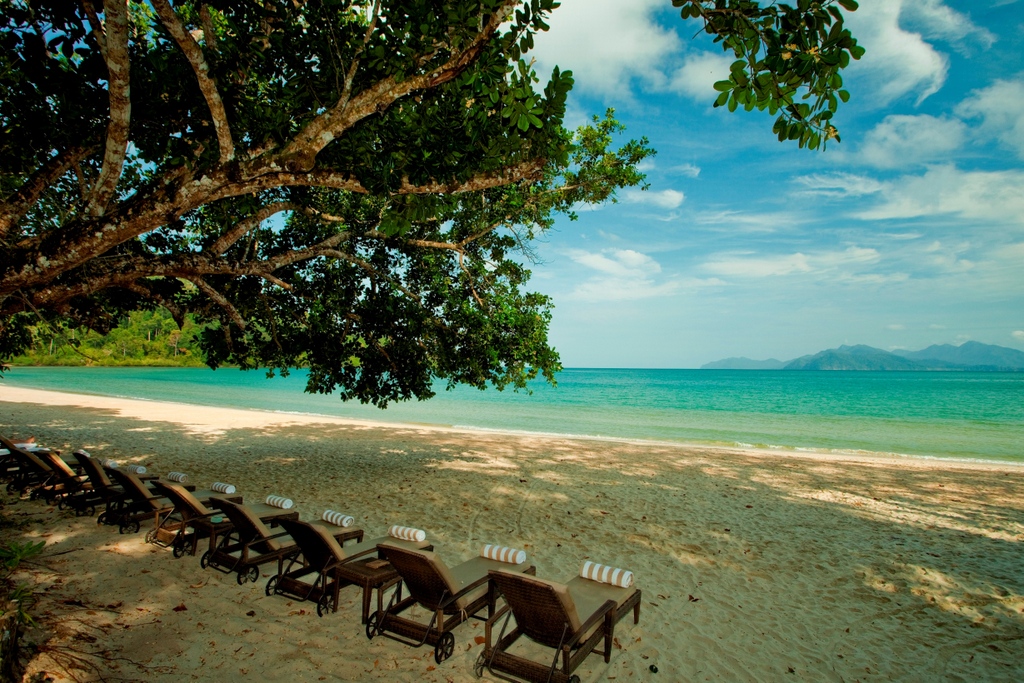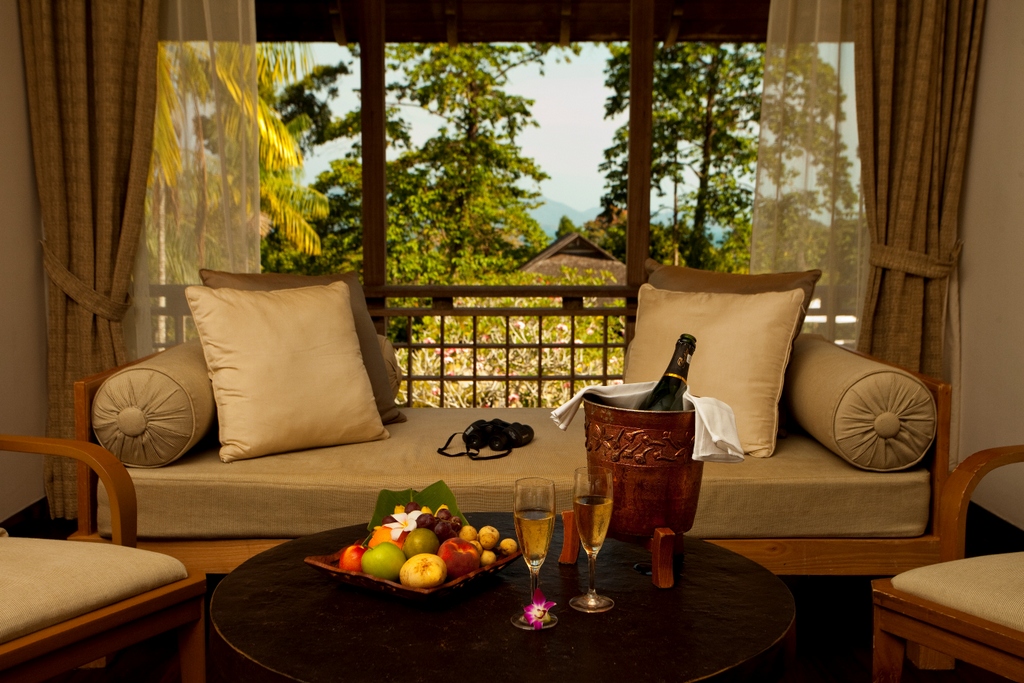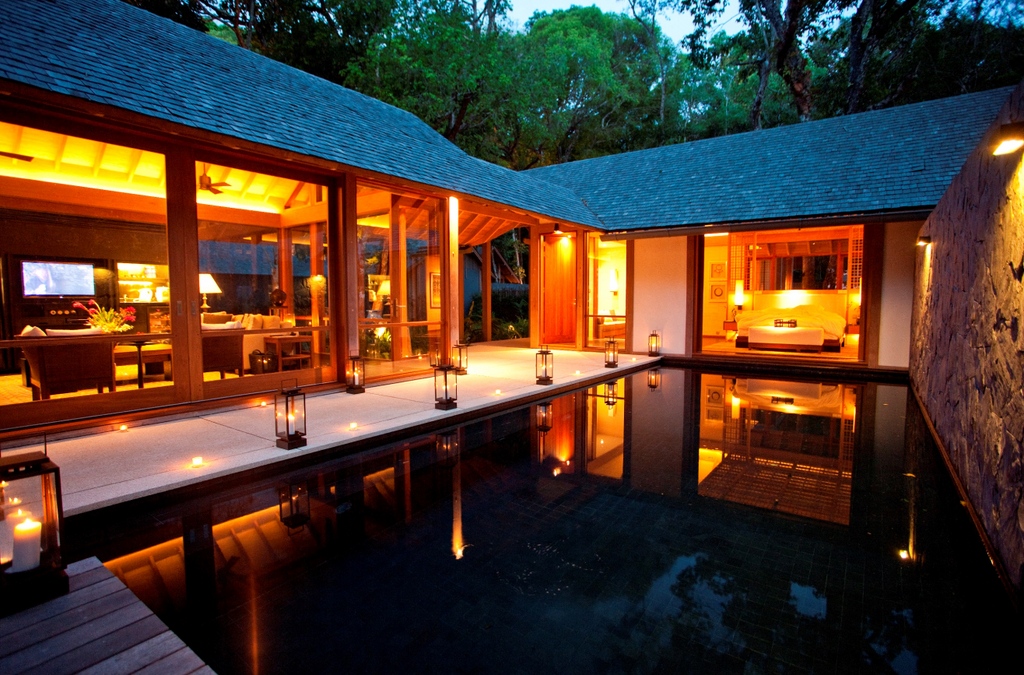NOT a food blog
Meeting Elena Arzak
31 Oct 2013 Author: Lyrical Lemongrass In: Bits and Pieces: Life, Location: SpainThe photographs from 2009 lacked the withered, yellowed appearance that one would expect of old photos. There was no mold, no dust, no opportunity to romanticize the experience of flicking through the pictures and feeling the brittle plastic sheet from the photo album rustle beneath my fingers. In this decade, photographs are merely a collection of millions of pixels without the benefit of exposure to light or dust. There is no burning of pictures to exorcise memories; you merely hit the delete button and everything is gone.
I pressed the right arrow key over and over and over again, each tap of the key hitting a different nerve within my body, an ache despite the lack of physical contact other than my index finger tap tap tapping on the arrow key as picture after picture from another time appear on my 15-inch monitor.
There are no pictures of our meal at Arzak in 2009.
******
We were staying at a B&B in San Sebastián which we eventually discovered was owned by a rather reputable restaurateur in the town. We didn’t know any Spanish, and he and his employees knew little English, but like love and music, the love of food formed that shaky bridge of understanding.
Arzak was fully booked, but the B&B owner managed to get us a table one sunny afternoon. Elena Arzak personally greeted us and led us to our table beside the kitchen. After spending some time getting to know us, she disappeared into the kitchen. What eventually came out was food that was visually magnificent with unexpected flavours and surprising textures. I don’t have the autographed menu with me anymore, nor do I have any pictures thanks to a strict ruling at the restaurant with respect to the photographing of food, but how can I forget the fresh, juicy mussels with rice vinegar, or the mushroom popcorn, or the lotus root with a mousse made of fish, or the figs, jam-like in texture with caramelised bits and foie gras that melts in the mouth, or the lobster served with crispy potato with an unusual texture, or the poached egg with sesame and seaweed, or the monkfish with olive oil in spherical shapes that had the appearance of bronze metallic paint, or onions cooked and flattened to resemble paper which was then painted on, or pigeon with silver, blue potato juice in blue globes, or strawberry soup and orange with red wine and sesame sugar. The images and flavours are etched in my memory. “Why are you smiling?” he asks. “Because I’m happy,” I reply.
If there is one meal in my life that I never want to forget, this is it.
As we prepared to leave the restaurant, Elena Arzak presented me with an autographed copy of her book. “You may not understand the language,” she smiled, “but it is a small gift to you so that you remember your time at Arzak.” I wondered why she would give me a gift as precious as this.
Her one message to me which I remember to this day is this: “There are people who save up a whole year to be able to dine at our restaurant, and there are people who can afford to dine daily here. We recognise that, and we treat everyone equally.”
******
We walked along the sandy beach of San Sebastian, the breeze gently lifting the frills of my blouse. I watched the children build sandcastles and laughed at the faith of fools and a misplaced sense of confidence in an eternity that is so easily washed away with the rising tides.
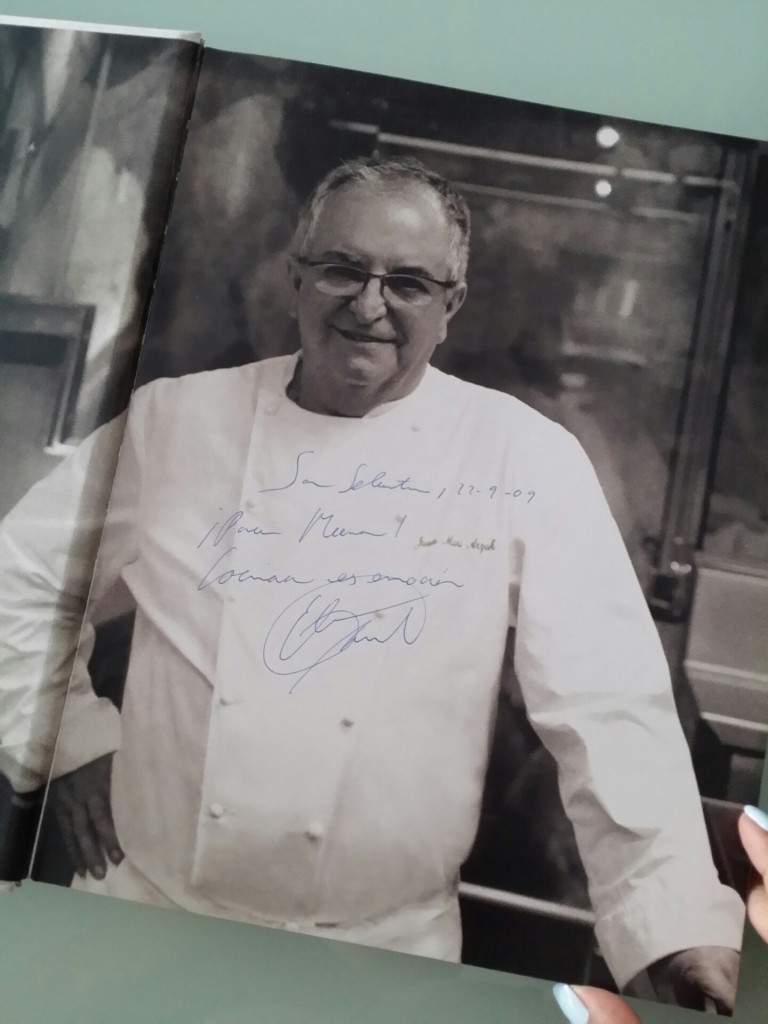
A picture of Elena’s father, Juan Mari Arzak, and Elena’s autograph.
Note: In 2012, Elena Arzak was voted The Veuve Clicquot World Best Female Chef. The restaurant is currently ranked 8th in the world on the San Pellegrino World’s 50 Best Restaurants list.
Arzak
Av del Alcalde José Elosegi, 273, 20015 Donostia-San Sebastián,
Spain.
Website
- 8 Comments
- Tags: arzak, San Sebastian
Restaurant Nepal – Himalayan Cuisine, Plaza Damas
24 Oct 2013 Author: Lyrical Lemongrass In: Food Type: Nepalese, Location: Hartamas*This is the air I breathe
This is the air I breathe
Your holy presence living in me
The subject of spirituality naturally arose while we were talking about Nepal. We were three individuals – one, who had visited Nepal 15 years ago, another who was born in Nepal but had moved away decades earlier, and then there was me – I, who had only seen Nepal in pictures. We were three individuals who knew each other on vastly varying levels, and we were gathered at the dinner table outside the restaurant one late evening, surrounded by concrete and the occasional passing vehicle, the scent of exhaust fumes suffusing the air and the melodious tinkling of percussion instruments from the speakers softly disturbing the otherwise quiet night.
I cut a tender piece of meat from the plate of pumpkin curry with mutton marrow. The dish had been cooked long enough for the mutton to lend flavour to the curry, a complex and rich, sweet and savoury, thick broth. This is a family recipe, so the typical visitor to Nepal may not be familiar with a dish such as this. At an earlier meal at the restaurant, I had learnt that a spice, “timmur” (with a similar taste profile as szechuan pepper), was used in this dish, which explained the tingling numbness I experienced when I ate it. This had to be my favourite dish at the restaurant.
“Everyone I know who has been to Nepal comes back with new-found spiritualism,” said one of them.
“It’s inevitable, isn’t it?” I replied. “One has to believe in a greater power when one sees the magnificence of the Himalayas.”
“It’s not just that,” said the other man. “One can find spiritualism in many things. For me, it was in my interaction with people I met along the way in Nepal. My conversation with a total stranger there was the turning point in my life. I was inspired by what she had shared with me, and as a result of that, I knew that I had to take risks and follow my dream.”
He picked up a steamed momo (a dumpling claimed by Nepal, Tibet and the surrounding regions as their own) , and cut it into two on his plate. Liquid squirted out as he realised, a split second too late, that he should have put the entire thing into his mouth instead. I carefully handled my momo and ate it like I would a xiao long bao. I have come to realise that momos are quite different from Chinese dumplings. Texturally, the skin is doughy and not as fine as Chinese dumplings, and the filling is not as subtle; this one had minced chicken and coriander, while in Nepal, one can even find momos filled with buffalo and yak meat.
“There’s something about travelling alone,” said the first man. “You have all these thoughts and reflections in your head….,” his voice trailed off. “You can find spirituality anywhere, you know,” he added, “even here.”
I suppose he was right. It is in the enjoyment of fellowship and communality, and in things so beautiful and glorious that they make you weep in their very presence. Art, nature, poetry, science.
The food at the restaurant is not unfamiliar. Rice is a staple in Nepal, as it is here in Malaysia, and one can order a thali set consisting of rice, black bean daal and a selection of vegetables. The style of cooking is primarily that of the Thakali people, and many of the spices used in the cooking are flown in from Nepal. If I had to name one herb that is widely used in many of the dishes here, it is coriander. Flavours are more indistinct as compared to what Malaysians are used to, but that isn’t necessarily a bad thing.
And so it was that spirituality was never defined in the course of our conversation, each one hesitant to broach the idea of God and the state of our belief (or nonbelief) in a greater being, but each one acknowledging that it represents the divine internal experience of an individual. Religion, I notice these days, has become a dirty word, that one either attempts to become a part of the world by denouncing it, or quietly practises it for insurance.
I downed my cup of Nepali chyaa, a traditional Nepalese masala tea recipe, and called it a night.
________
*Breathe – Michael W. Smith. This song, in all its simplicity, has been the inspiration for this post.
________
This write-up is a culmination of two visits, the first, an invited review (thanks, Robin Sherchan!), and the second, an impromptu late night visit after a long day at the office where I was in dire need of warmth (food and company). I was satisfied on both aspects.
________
For a humorous and totally witty take on his meal at Restaurant Nepal – Himalayan Cuisine, check out Fatboybakes’ blog. And no, he is NOT one of the individuals mentioned above. We don’t have deep conversations. We spend most of our time together saying meaningless things like “yennadei”, “vanakkam”, “biatch”, etc. Which is fine, really.
________
Restaurant Nepal – Himalayan Cuisine (directly opposite TGI Friday’s, outside)
F-O-6 Ground Level
Plaza Damas Shopping Centre
60 Jalan Sri Hartamas 1
50480 Kuala Lumpur
+6 016 9770 718 , +6 03 6206 3904
Open daily. Lunch and dinner.
www.facebook.com/RestaurantNepalKL
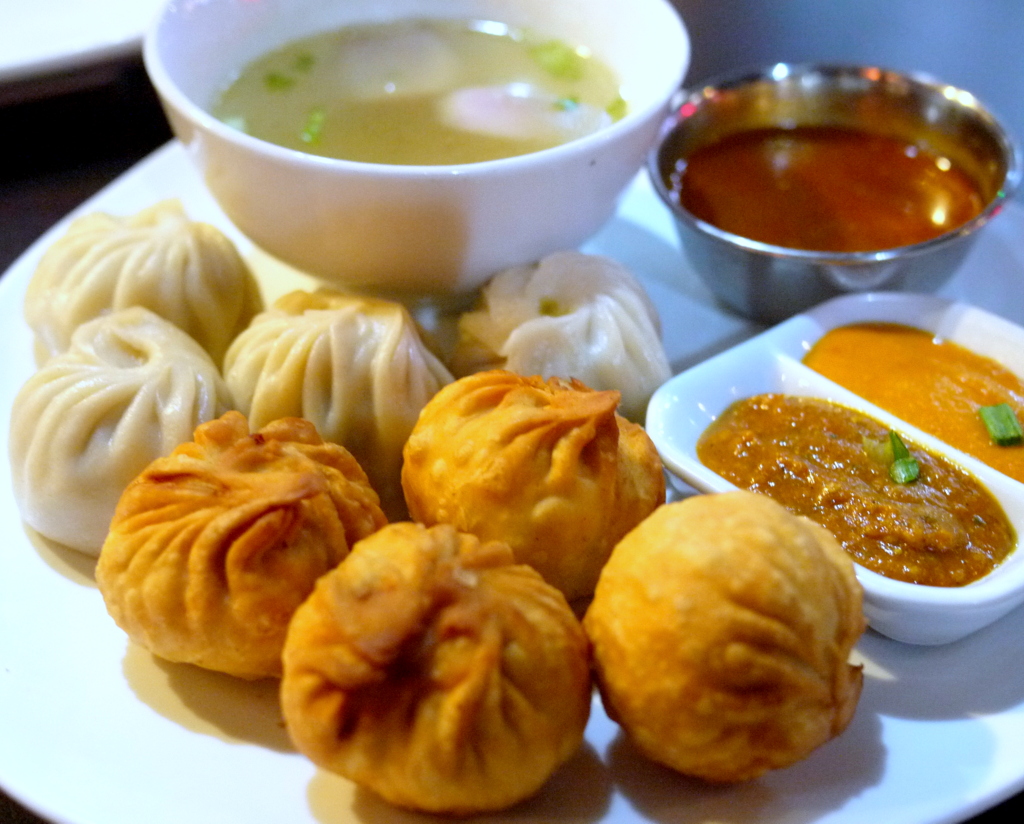
Deep fried momos and steamed momos. RM12. There is also a pan-fried option which I haven’t tried. My personal favourite is the deep fried kind. Nice crunch, crispy skin, luscious chicken filling. Can’t go wrong.
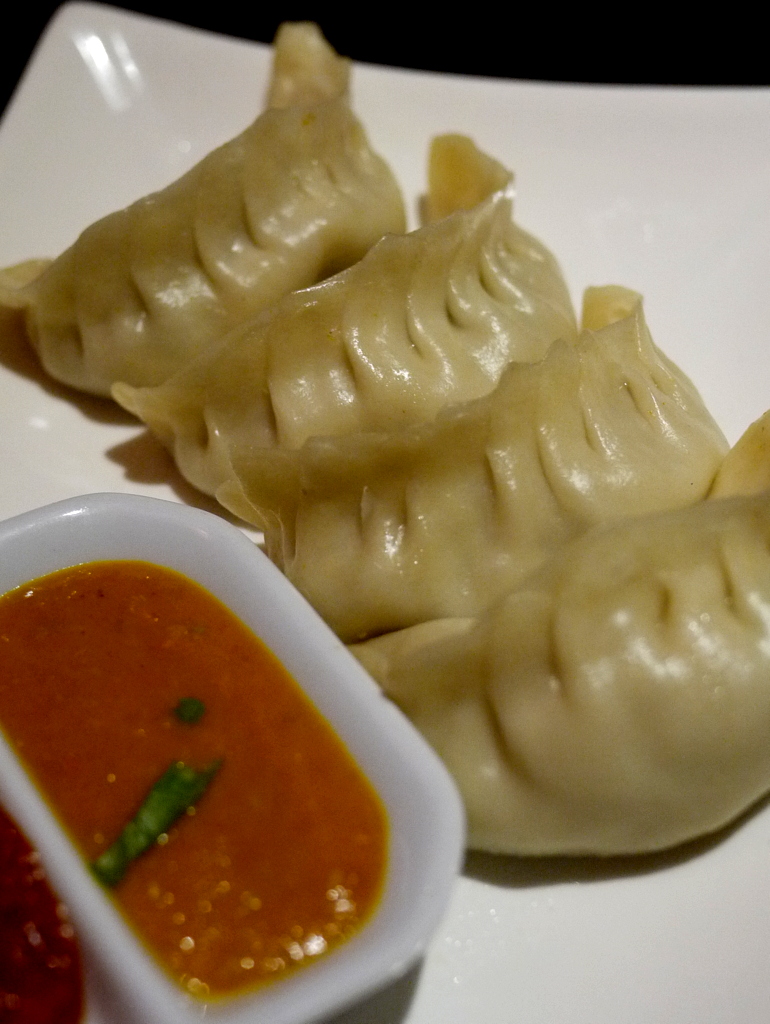
More momos. Steamed momos. Depending on the cook, you may sometimes get the round momos like in the picture above this, or the crescent shaped momos like in this picture.
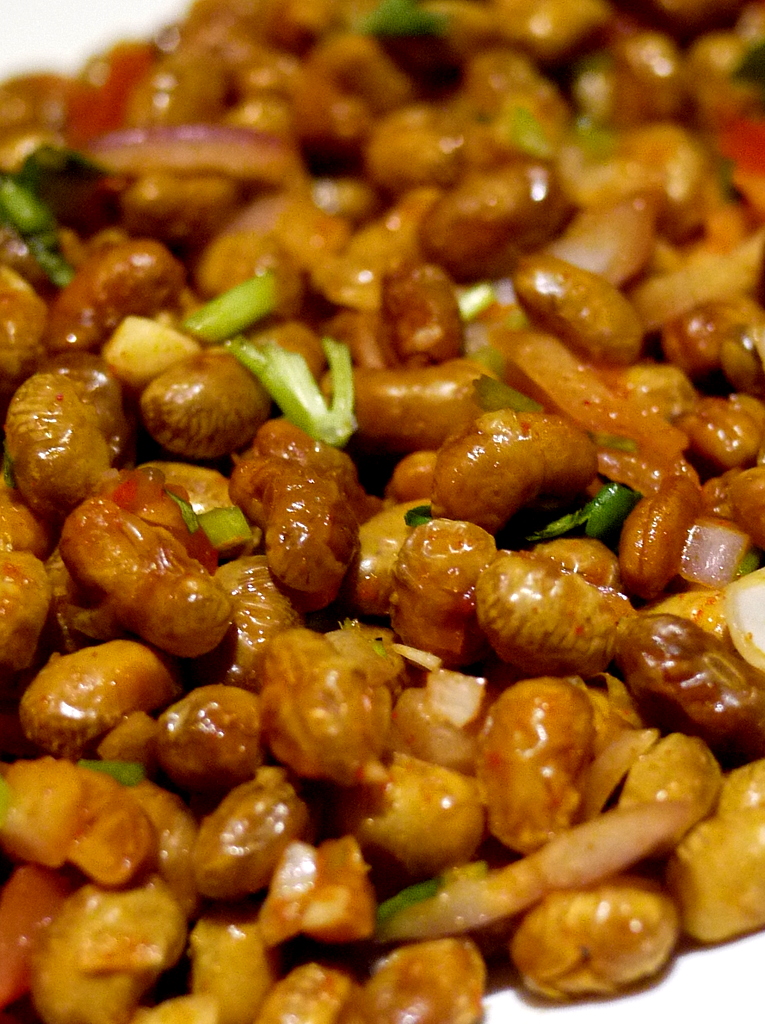
Bhuteko bhatmas. RM9. Crispy soybeans marinated in Nepalese spice. As a complement to dishes, probably not. But will go wonderfully with drinks. (Tip: Order the Shangri-lla – a light refreshing sangria with finely sliced bits of apple RM9/glass RM40/jug.)
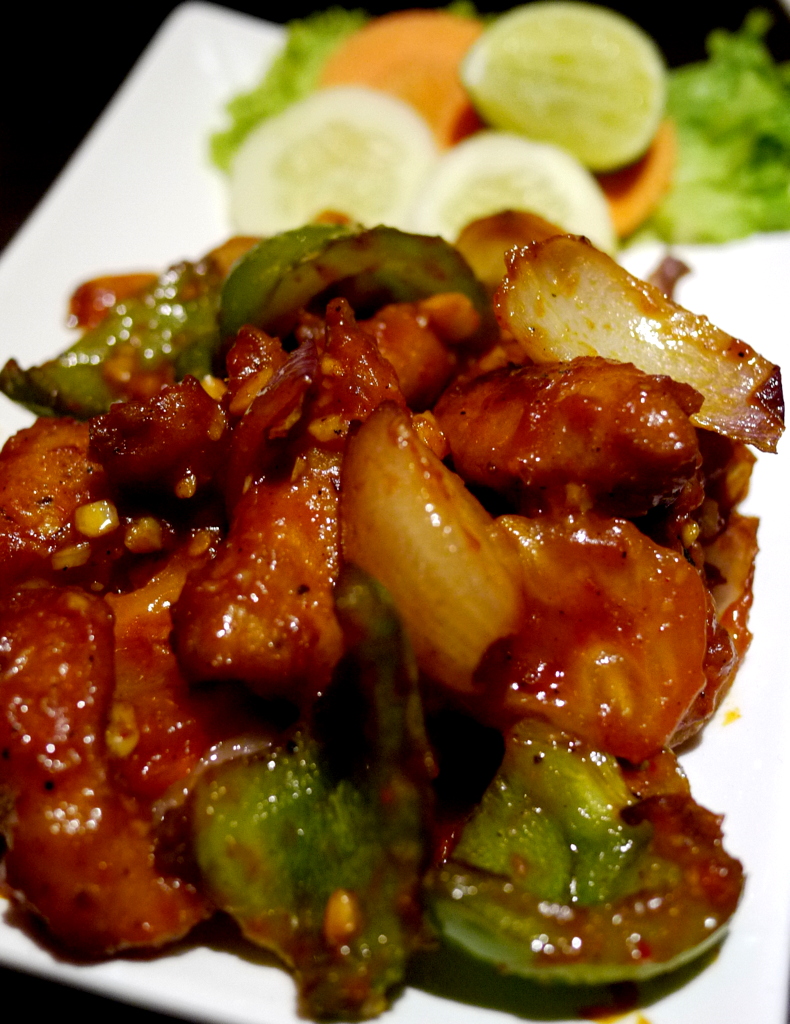
Chicken chilli. RM12. Battered chicken pieces marinated in herbs, fried with onions, capsicum, green chillies and tomatoes in a sweet and sour sauce. Reminiscent of a Chinese sweet and sour dish, but then again, that’s not surprising as Nepal borders China and there will invariably be overlapping influences in their foods.
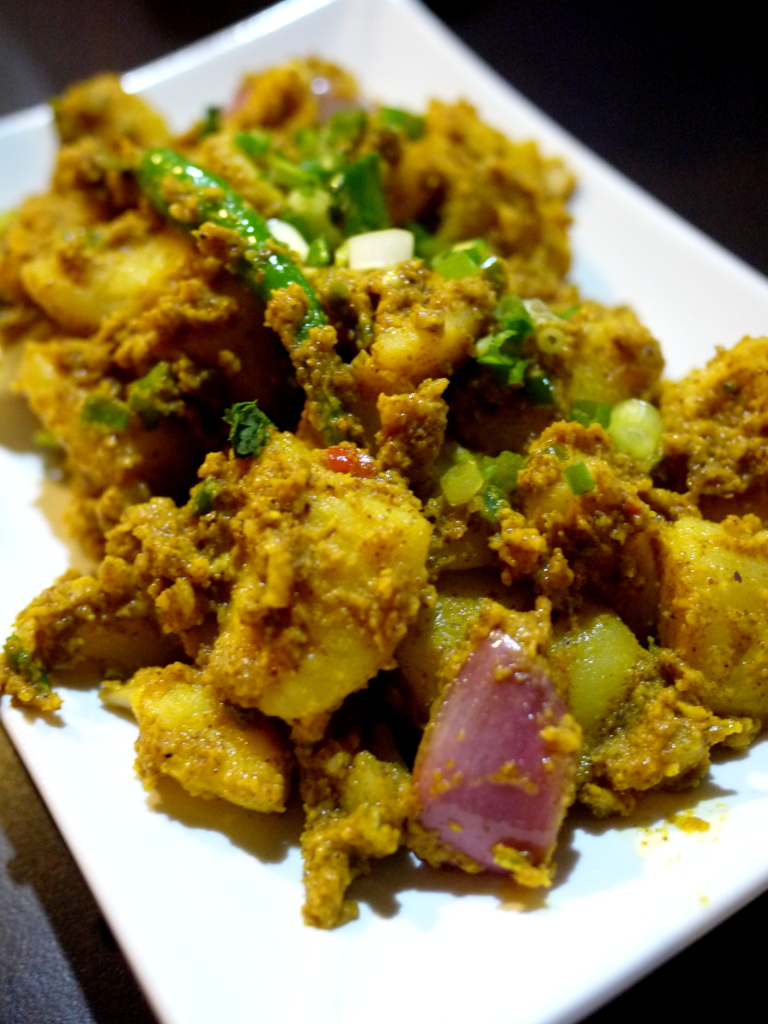
Aloo silam. RM12. Boiled potatoes marinated with red onions and silam (perilla seeds). Rather unremarkable for my palate.
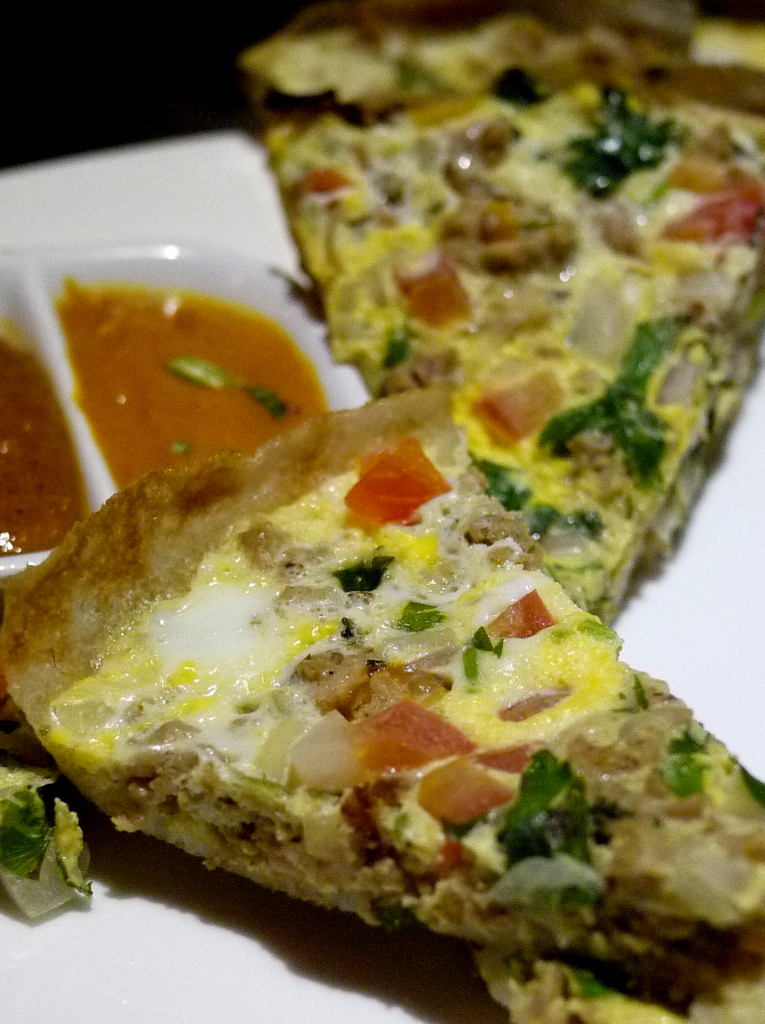
Chata-mari. RM12. Nepalese version of pizza. Thin crusted battered rice crepes with minced chicken, spring onions, tomatoes and egg.
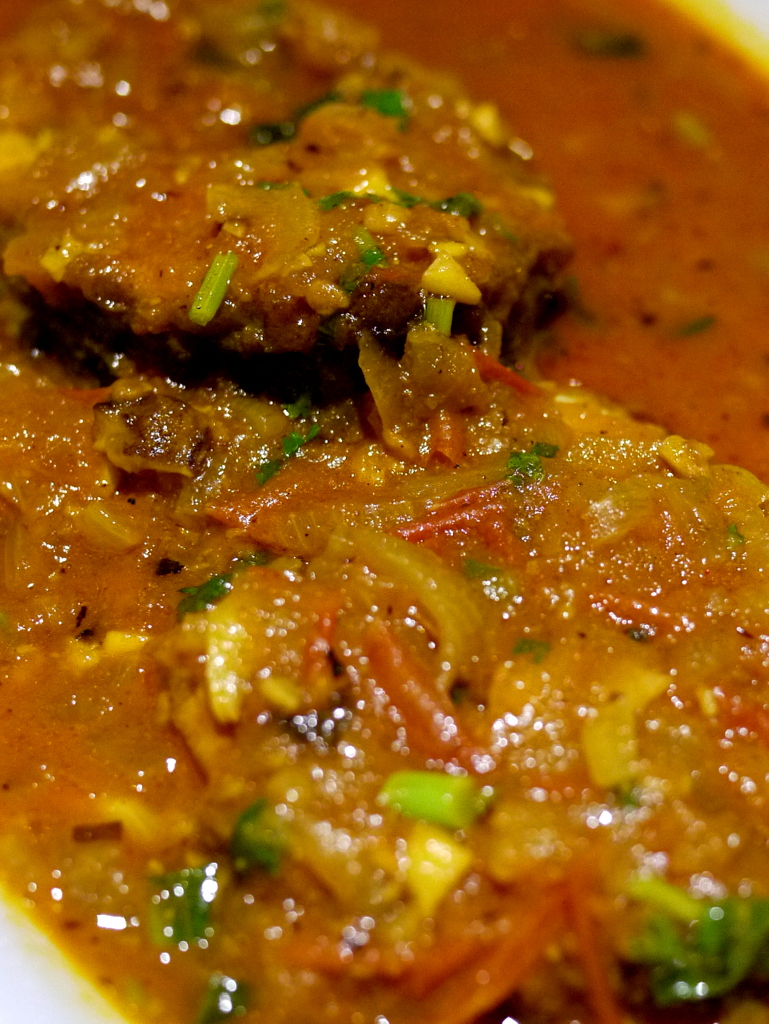
Jhwol maccha. RM18. Fish in a spicy and sour curry. One of my favourites as it has the right amount of tanginess.
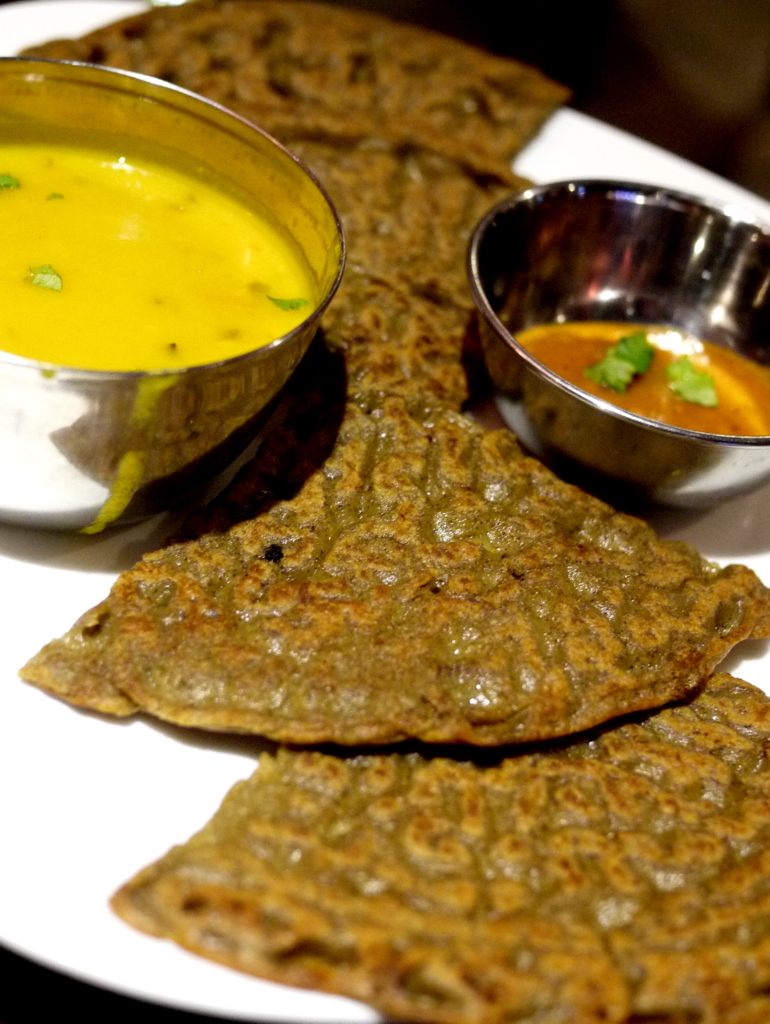
Fapar ko roti. RM7. Buckwheat bread.
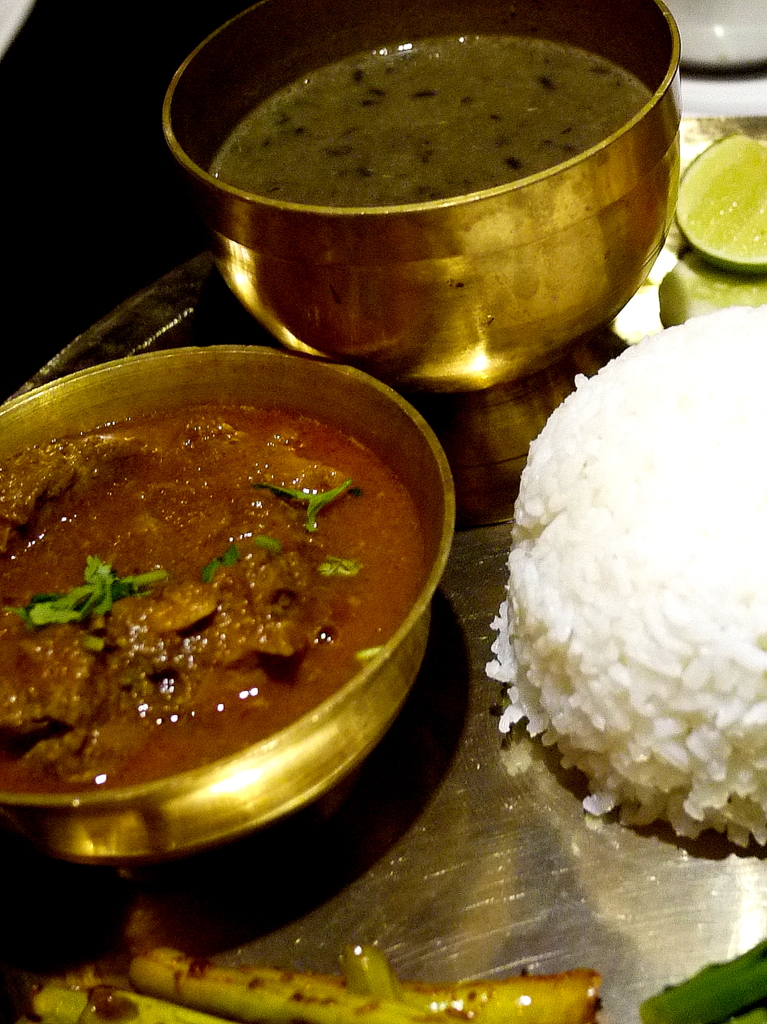
Khasiko masu bhat. RM17. Mutton Thakali thali set with black bean daal and an assortment of vegetables. Obviously, this will be a complete meal in itself. I’d order it again just to eat from the brass bowls.
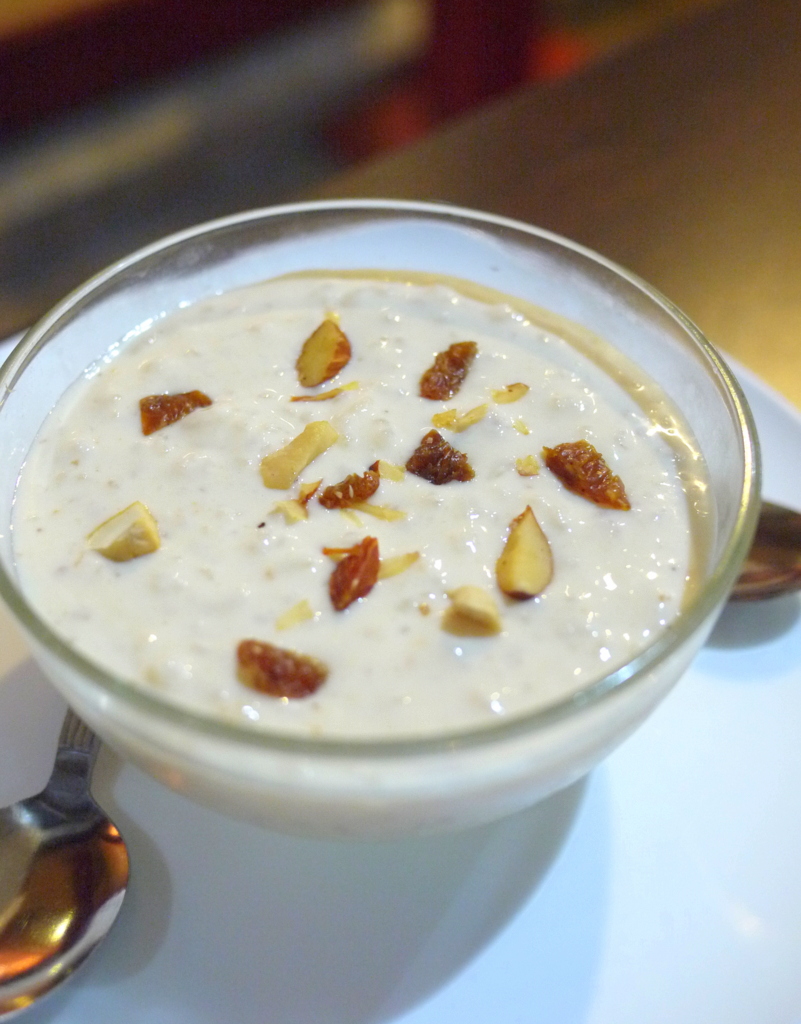
Kheer. RM8. Rice pudding cooked in milk and cloves. Leave room for this. That is, if you’re like me and you like sweet desserts.
The Datai Langkawi – Overview
30 Sep 2013 Author: Lyrical Lemongrass In: LOCATION: KEDAHThe welcome
I had just landed at the Langkawi International Airport, and standing before me was a lanky man holding a placard with my name on it. He had a pleasant smile, this mild-mannered man, and meeting him provided the perfect transition – my passage from hectic city living to paradise. He allowed me the luxury of dwelling on my own thoughts for the 30 minutes ahead of me, but I was keen to talk. “What’s the music that you’re playing right now?” I asked appreciatively. “I don’t know,” he replied sheepishly, and handed me the CD sleeve. “Mmmm….it’s nice,” I said. He smiled. “It’s peaceful, isn’t it?” he replied. I nodded. The rest of the time was filled with endless chatter about work and family and religion. As we drove up to the entrance of The Datai, he took out the music CD from the player and handed it to me. “Here, you have it,” he said.
The private beach at The Datai
The Datai is located at the north western tip of Langkawi and is surrounded by virgin rainforest with a private footpath leading to the white sand beach. The Datai’s 54 villas, 16 suites and 54 rooms are all set within the rainforest with their own private verandas. The first thing I did when I checked into my room was to throw open the balcony doors and inhale the fresh air. Little did I know that monkeys are common visitors at The Datai, and a dusky leaf monkey was observing me just a few metres from where I stood on my balcony!
The typical visitor to The Datai must be someone who loves nature. At night, I was serenaded to sleep by an orchestra of sounds emanating from the jungle – the deep croak of frogs to the quiet song of crickets. Nature’s symphony. In the day, birds would perch on my balcony, chirping briskly like a bunch of housewives sharing the morning news. It’s a euphoric and comforting experience. It’s a place where one can be alone, and yet not feel lonely.
Premium room
The villas offer guests privacy as they are set apart, separated by trees and connected by an intricate series of pathways. The pool villas, as the name indicates, have private plunge pools and jacuzzis. They are all luxurious, and are all equipped with a dining table for two, LCD flat screen TV, Bose CD sound system and iPod dock, and their sizes range from 93 square metres to 120 square metres.
The rooms, on the other hand, are no less impressive. At 62.5 square metres in size, they’re relatively large, and offer views of either the Andaman sea, the pool or the rainforest. Binoculars are provided in the premium rooms for those who want to do a spot of bird watching. Of course, what blew me away were the beach villas. At 218 square metres (for the one bedroom beach villa), the beach villas fringe the ocean on one side and the forest on the other, with a gorgeous outdoor shower, a glass walled bathroom, a 10 metre private swimming pool, a lush garden and a separate dining and living area. The price is not for the faint-hearted. Rates start from RM9,550 per night.
Beach villa
There are pros and cons. Cons – You’re isolated, so unless you have a car, be prepared to dine in everyday. Pros – Dining in isn’t all that bad. You have a choice of 4 restaurants (more about the restaurants later), so you won’t go hungry.
The best thing about the resort is the service. Service is attentive, be it at the resort or the restaurants. Often, service seemed to be personable as well, as there appeared to be a genuine interest in getting to know the guests better. I think it works both ways; one has to be interested in getting to know others if one expects others to show an interest in getting to know you. A smile goes a long way, I’ve learnt, and the eyes speak the heart’s intent.
Next post: Things To Do at The Datai
Note: Thank you to the management of The Datai Langkawi for inviting me to stay at the resort. More info can be found at www.dataihotels.com. You can also visit their Facebook page HERE.
About this blog
Food, for me, is a means to an end and not an end in itself.
Food, for me, represents the love of family, the fellowship of friends, and the community and communality it brings.

